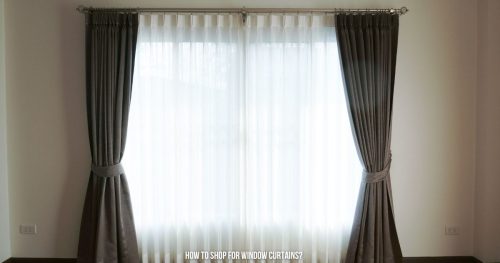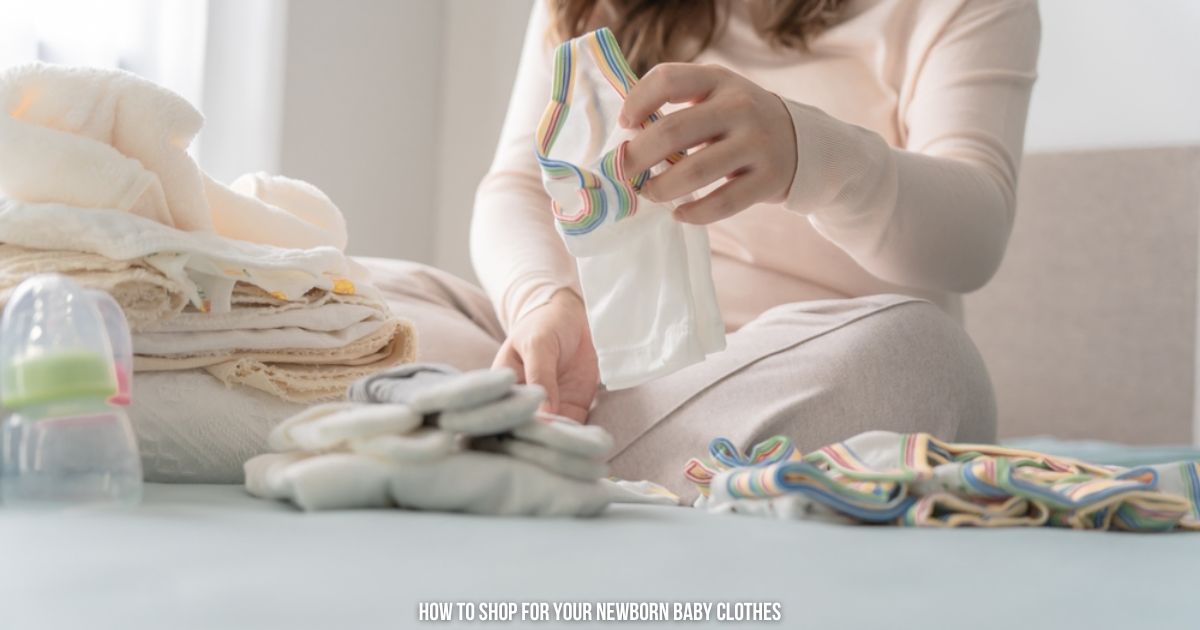November might feel like a quiet lull between the spookiness of October’s Halloween and the koala-couching of December’s holiday flurry—but it’s actually a prime opportunity. In this article, I’ll explore why November is a great month to start shopping, how you can plan strategically, and practical steps you can take to make smart purchases across fashion, gadgets, lifestyle, and more. Think of it as expert guidance delivered in a friendly tone—so you can shop with confidence, not confusion.
By the end, you’ll understand why the key phrase “month to start shopping” holds so much weight in your retail calendar, how to time purchases, what pitfalls to avoid, and how to align your lifestyle (whether you’re in the US, UK, or elsewhere) to your shopping strategy. Ready? Let’s dive in.
1. Why November Enters the Spotlight as the Month to Start Shopping
1.1 Timing is everything

– November sits at an intersection: the year’s end is approaching (so retailers begin ramping deals), yet the frenzy of December hasn’t quite peaked.
– The retail industry often treats November as the opening act of the “holiday shopping season.” For example, retail sales rose 0.7% in the U.S. in November 2024.
– Online spending from November 1–24 in one year rose by 9.6% from the previous year.
This means you have room to move: deals are starting, inventory is fresher, and you can beat the last-minute rush.
1.2 The deal calendar aligns
– Big shopping events are clustered in November:
-
Black Friday (the day after Thanksgiving in the U.S.)
-
Cyber Monday (first Monday after Thanksgiving)
-
In many markets, promotional activity begins early in November (and even late October).
– Retailers often release markdowns, clearance, and early-holiday deals in November to capture shoppers before December.
– Because demand and discounting intensify, November becomes the optimal month to start shopping for both gifts and personal purchases.
1.3 Inventory and choice are still strong
– By beginning your shopping in November, you avoid the “sold out” frustration that can accompany December. Popular items haven’t yet been snatched up.
– You have the flexibility to compare deals, track price changes, and even return or exchange items with more breathing room.
– From a lifestyle perspective (especially for readers in markets like the UK or US, but adaptable globally), that means less panic, more smart decisions.
1.4 Psychological & financial benefits
– Starting early spreads your budget over more time, reducing pressure.
– You get first pick of styles, sizes, colors—especially in fashion or tech.
– You benefit when retailers offer incentives (free shipping, extra discount codes) at the start of the season.
– It helps you align shopping with lifestyle transitions (e.g., move from warmer to colder seasons, or prepping for holiday entertaining).
In short, November offers a sweet spot: deals are heating up, inventory is still plentiful, and you can shop with less stress. That’s why this is truly a month to start shopping.
Custom Looks, Tailored Light: Discover the TwoPages Difference
Curtains are more than just fabric—they’re the soul of your space. At TwoPages, we craft customizable drapes that match your vision, your vibe, and your windows perfectly. From blackout to linen, modern to classic, we’ve got you covered. Visit twopagescurtains.com today and let your windows make a statement.
2. Practical Tips & Step-by-Step Guide for Using November as Your Shopping Launchpad
Here are actionable strategies to make the most of your November shopping window. Think of this as your step-by-step blueprint.
Step 1. Set your goals & budget
-
Ask: What am I shopping for? Gifts, personal treats, upcoming travel, wardrobe refresh?
-
Assign a budget: Having a clear number helps prevent overspending.
-
Prioritize categories: Rank items by urgency (e.g., replacing a worn-out coat vs. just “nice to have”).
-
Decide: Will you buy early (November) or wait for deeper discounts later? Starting in November gives you options.
Step 2. Research ahead of time
-
Track price history: Some tools monitor how prices change week to week.
-
Make wish-lists: Note specific items you want across fashion/tech/home.
-
Sign up for alerts and newsletters: Retailers will often send early deals to subscribers.
-
Use deal-comparison sites: To confirm that what you’re getting is a real bargain.
Step 3. Exploit early-November promotions
-
Many retailers offer “pre-holiday” sales in early November—often less chaotic than the big weekend deals.
-
Look for “doorbuster” previews or early access codes.
-
Shopping in early November means you may avoid the logistical rush of late November (returns, shipping delays, sold-out items).
Step 4. Know the big deal days and timing
Below is a brief timeline with an explanation:
| Date/Period | What happens | Why it matters |
|---|---|---|
| Early November | Some pre-holiday sales, inventory still strong | Good for non-urgent but desired items |
| Mid to late November | Major events (Black Friday / Cyber Monday) | Big discounts, high volume, but more competition |
| Post-Cyber Monday to December | Clearance / last-minute deals | Still good, but inventory might be limited, shipping delays increase |
By making November the core of your shopping activity, you capture the best of both worlds: early access + big event discounts.
Step 5. Use deal-tracking and alert tools
-
Set up price alerts for high-value items (e.g., laptops, designer pieces).
-
Bookmark items and revisit a few times to see if prices drop further.
-
Use cashback websites, coupon codes, and loyalty-program perks.
-
Monitor shipping/return policies (especially relevant if you’re in the UK/US and shopping across borders).
Step 6. Shop smart in specific categories
Fashion & accessories
-
Late November is just before the big holiday wardrobe rush—so you’ll find winter coats, boots, and warm layering pieces.
-
Start browsing early to find your size and style before holiday gifting or wearing events.
-
Use your wish-list to track when an item enters deeper discount territory.
-
Example: You see a winter coat you like in early November. You monitor it, check reviews, then buy when it dips 20–30% during a Black Friday event.
Tech & gadgets
-
Brands often launch new models in September/October; by November, last-year models or early deals surface.
-
Bargain hunters who wait until December might miss first picks; so beginning in November gives you access without waiting.
-
Example: You’ve wanted a new tablet; you start tracking in November and pick it up when a retailer offers 15% off plus free shipping.
Home & lifestyle items
-
From kitchen appliances to home décor, November often features “bundle” deals (e.g., buy one get one), “upgrade” promos, and early clearance.
-
For home move-ins or lifestyle refreshes (which might be relevant if your workplace is changing between the US/UK), shopping in November helps you time shipments, returns, and setup before the year-end.
Wellness & seasonal needs
-
If you live in colder climates or expect winter conditions, November is when you can prepare (warm bedding, heaters, skincare for cold/dry seasons) before stocks shrink.
-
For skincare: November deals let you stock up on higher-value items (serums, moisturizers) ahead of the winter skin-stress period.
Step 7. Execute with returns and gift-planning in mind
-
Make sure you’re aware of return windows. Buying early gives you more flexibility.
-
If you’re buying gifts, shipping, wrapping, and delivery timelines are less pressured.
-
Consider splitting purchases: some early in November (safe picks), some during deals (risk-y but high reward).
-
Keep track of receipts, promo codes, and tracking info.
Step 8. Review and adjust post-purchase
-
After you’ve made your purchases, revisit your list: Did you meet your budget? Did sales go deeper (if so, consider return/re-buy)?
-
Adjust your strategy for next year: what worked, what didn’t.
-
For example: “I paid full price in early November for a gadget, then it dropped further at Black Friday. Next year, I’ll track and wait a week.”
3. Real-Life Examples & Mini Case Studies
Case Study A: Fashion-Forward Jane
Jane lives in the UK and wants to refresh her winter wardrobe.
-
In early November, she makes a list: a wool coat, boots, a few knit jumpers, and a handbag.
-
She signs up for discounts from her favorite brands, sets alerts for the coat, and tracks boots on her ishlist.
-
On “Black Friday week,” she gets 25% off the coat via email code, and buys the boots at a flash 30% off.
-
Because she acted in November, she avoids stockouts, returns easily, and has a wardrobe ready for December events.
Case Study B: Tech-Seeker Mark
Mark is in the US and wants a tablet and new wireless headphones.
-
In early November, he monitors his desired tablet model. He sees it drop 10% just before Thanksgiving, then a 20% bundle after Thanksgiving, including headphones free.
-
He buys during that bundle, saving 20% and getting accessories. The return window is satisfied before the new year.
-
This showcases how November is a month to start shopping for tech, not waiting until December stress.
Example: Home Lifestyle Purchase
Kris (another user) plans to move his content-writing setup between the US and the UK. In November, he finds a desk/monitor combo bundled with shipping flexibility and buy-now-pay-later (BNPL) options. Because he purchased early, he schedules delivery, sets up before December, and doesn’t scramble.
Why these examples matter
They illustrate key patterns:
-
Starting in November gives you a choice.
-
Early buys + deal monitoring = better value.
-
You avoid last-minute panic, shipping delays, and limited inventory.
-
For both gifts and personal purchases, this mindset works.
4. Seasonal, Lifestyle & Contextual Considerations (US/UK & Beyond)
Since you’re a content writer toggling between the US and UK, and have an interest in fashion, home, lifestyle, gadgets, and tech, here’s how to tailor your November strategy accordingly.
For the US market
-
Black Friday and Cyber Monday dominate; these typically fall in late November. That means early November is your “pre-rush” period.
-
Holiday shipping starts to get busy; earlier purchases = better odds.
-
Consider tax-free weekends in some states as additional opportunities.
For the UK market
-
Many UK retailers adopt U.S.-style deals around Black Friday (which UK stores have increasingly embraced). Early November gives you first access.
-
Currency, VAT, shipping abroad: If you’re buying from the U.S. to the UK (or vice versa), watch duties, shipping costs, and delivery windows.
-
For fashion & home: Black Friday deals often include popular UK chains and online-only promos, so tracking early helps.
Lifestyle & work-mobility context
-
If you’re moving between the US & UK for work, purchasing in November means you can coordinate shipping, tax/duty considerations, and set up your space early.
-
For content-writing gear (gadgets, laptops, external drives): November deals help you update equipment before year-end deadlines.
-
For wardrobe/lifestyle: Changing seasons (autumn to winter) means November is exactly when you shift into warmer layers, so shopping then aligns with actual need.
Fashion & seasonal style considerations
-
Winter coats, boots, knitwear, and accessories drop in November. Stock is good, and sales are strong.
-
For skincare and wellness: transitioning into colder, drier months? November gives you time to find the right products before skin issues escalate.
-
For home décor: As we move toward holidays (Thanksgiving/Christmas), retailers begin themed stock; buying early in November lets you avoid the high-demand rush.
Tech & gadget timing

-
Manufacturers often release new models in autumn; by November, early adopters have gone in, and deals on previous models appear.
-
Logistics: shipping globally can be smoother in early November versus the chaotic December period.
-
If you travel between the US/UK, check power plugs, warranties, and shipping returns.
Spending & budget mindset
-
While November is a great month to start shopping, it doesn’t mean you buy everything just because it’s “on sale”. Set clear priorities.
-
Be aware of shipping/free-delivery cutoff dates, especially for holiday gifts. Early – a huge pro.
-
If you’re buying internationally, conversion rates, shipping costs, and customs/duty can erode the “deal,” so factor those in.
5. Common Mistakes & Pitfalls to Avoid
Here are the traps many shoppers fall into — and how you can sidestep them while starting your November shopping spree.
Mistake 1: Buying too early without checking for deeper discounts
-
Scenario: You buy in early November at 10% off, but a week later, it goes 30% off.
-
How to avoid: Monitor wish-list items, set alerts, and wait for a second price drop if the purchase isn’t urgent.
Mistake 2: Ignoring shipping, return, and warranty details
-
Items bought during big deals often have stricter return windows or limited stock.
-
Avoid by: checking return policies, tracking shipping cut-offs (especially if gifting internationally).
Mistake 3: Over-shopping because you feel the “deal” vibe
-
Because November feels like a month to start shopping, you might buy things you don’t need.
-
How to avoid: Revisit your list, ask whether this purchase aligns with your budget, lifestyle, and needs.
Mistake 4: Failing to compare across currencies/markets
-
If you buy from the U.S. while living in the UK (or vice versa), conversion, shipping, duty, and warranty may cause hidden costs.
-
How to avoid: Do a full cost calculation, check warranty coverage across markets, and shipping return cost.
Mistake 5: Ignoring lifestyle fit or seasonality
-
Example: Buying summer shoes in November just because they were cheap may mean you don’t wear them.
-
How to avoid: Buy with intention that matches your upcoming months (winter wear now, travel gear later, etc.).
Mistake 6: Waiting too long and losing inventory
-
While starting early is wise, waiting past the major deals can mean limited stock and higher prices.
-
How to avoid: Plan to act within November—even if you wait for the major sale weekend, be ready.
6. FAQs (Frequently Asked Questions) About November Shopping
Q 1: Is November always the best month to start shopping in every category?
A: It’s a strong month for many categories (fashion, tech, home décor), but not necessarily for everything. Some seasonal items (e.g., swimwear) may still be better later or out of season. Also, what’s “best” depends on your region, currency, duties, and shipping. The key is that it is a great month to start shopping—not the only month.
Q 2: What if I live outside the US or UK—does this still apply?
A: Yes, many of the deal cycles (Black Friday, Cyber Monday) have a global reach. But you should check local promotional calendars, import/shipping costs, and local seasons. The overarching concept—that November is a strategic launch point—is widely transferable.
Q 3: Should I wait until December for deeper discounts?
A: Possibly yes for some items—but waiting has costs: more stress, limited stock, slower shipping, and fewer return-buffer days. Starting in November gives you a head start and flexibility. For many shoppers, that trade-off is worth it.
Q 4: What about early-October deals or “pre-November” promos?
A: Good question. Some retailers begin even earlier, and you may find strong deals in late October. However, November remains the sweet spot: enough time in the season to research, and still early enough to beat the rush. So yes, October is valid, but you don’t want to forgo November.
Q 5: How do I handle budgeting for major promotions in November?
A: Treat your budget like this:
-
Set an overall cap for your November shopping.
-
Break it into categories (e.g., fashion 30%, tech 40%, home 30%).
-
Allocate “deal-buffer” money (so you can pounce when a deep discount appears).
-
Review after purchases: Did you stay under budget? Could you have waited for a better deal? Use learnings for next year.
7. Summary Table: Why November Is the Month to Start Shopping
| Factor | What it Means for You | Why It Supports “Month to Start Shopping” |
|---|---|---|
| Timing of deals | Big-ticket events (Black Friday, Cyber Monday) are late in November | Gives you a window to research & act |
| Inventory & choice | Items are still plentiful early in the season | You don’t rush or settle for less |
| Shipping & logistics | Less forecasted overload than December | Better delivery, easier returns |
| Budget management | Spread spending rather than cramming the end-of-year | Lower stress, smarter buys |
| Seasonal fit | Winter, cold-weather goods, and home décor align with timing | You shop for relevant items, not leftovers |
| Global reach | Deals in the US/UK often spill over internationally | Access to international promotions (with caution) |
8. Final Thoughts: Making November Your Strategic Shopping Launchpad
When you think of the phrase “month to start shopping”, November stands out not because it’s simply the first available opportunity—but because it balances choice, deals, timing, and logistics. Starting your shopping in November doesn’t mean you buy everything at once, but it means you enter the purchasing cycle early, with intelligence, budget control, and strategy.
In practice: you set your wishlist; you monitor deals; you commit when values align; you track shipping/returns; you avoid panic buys. Whether you’re in the US or UK, whether you’re buying for yourself (fashion-tech-home) or gifts, this approach gives you an advantage. Use November proactively. Resist impulse, but be prepared. Treat it as your launchpad—and you’ll avoid the last-minute scramble, the sold-out disappointments, and the stress of December logistics.
Conclusion
November truly earns its place as a prime month to start shopping. It gives you a head-start in the retail calendar, allows you to access both early deals and major promotional events, and helps you manage budgets, inventory, and delivery timelines with greater ease. By approaching it with intention—setting goals, tracking wish-lists, comparing prices, and executing smartly—you’ll position yourself ahead of the curve rather than playing catch-up in December.
So if you’re thinking about your next wardrobe upgrade, tech acquisition, home refresh, or gift haul, mark November as your strategic move-in. Treat it as more than just “I’ll start soon”—treat it as *your month to start shopping—and make it count. You’ll thank yourself later when you’re relaxed, prepared, and satisfied with your choices instead of rushed, stressed, and settling for less.













